The back parking lot (A on the plan below) was renovated in December 2011 as part of the m1ssion campaign. The renovation included sustainable landscaping using native and canoe species that are common at low elevations, drought tolerant, and low maintenance.

Return to the LCH Campus Plan
Back Parking Lot page
m1ssion campaign page
Thanks to Jim Sullivan for collecting most of the information on this page.
|
Back Parking Lot Landscaping
In keeping with congregational commitment to sustainability, landscaping for the renovated parking lot was planned with the following goals in mind:
- Use native Hawaiian species
- Use canoe species
- Drought tolerant plants
- Plants common at low elevations
- Low maintenance
- Plants with cultural significance
- Aesthetic character
- Environmental benefit
The Landscaping Advisory Committee (made up of Peggy Anderson, Josie Bidgood, Randy Castello, Jimmy Castro, Carol Langner, Ron Murashige, Jim Niermann, Jim Sullivan, and Paula Wheeler) developed the plan shown below that included four large trees and a variety of shrubs and ground cover. Click on any of the labels on the plan or the links below to read about the plant chosen for the landscaping.

Plants Used in the Parking Lot Landscaping
The table below provides information on the trees and plants used in the landscaping of the parking lot. Click on any of the pictures to see a larger version of the photo.
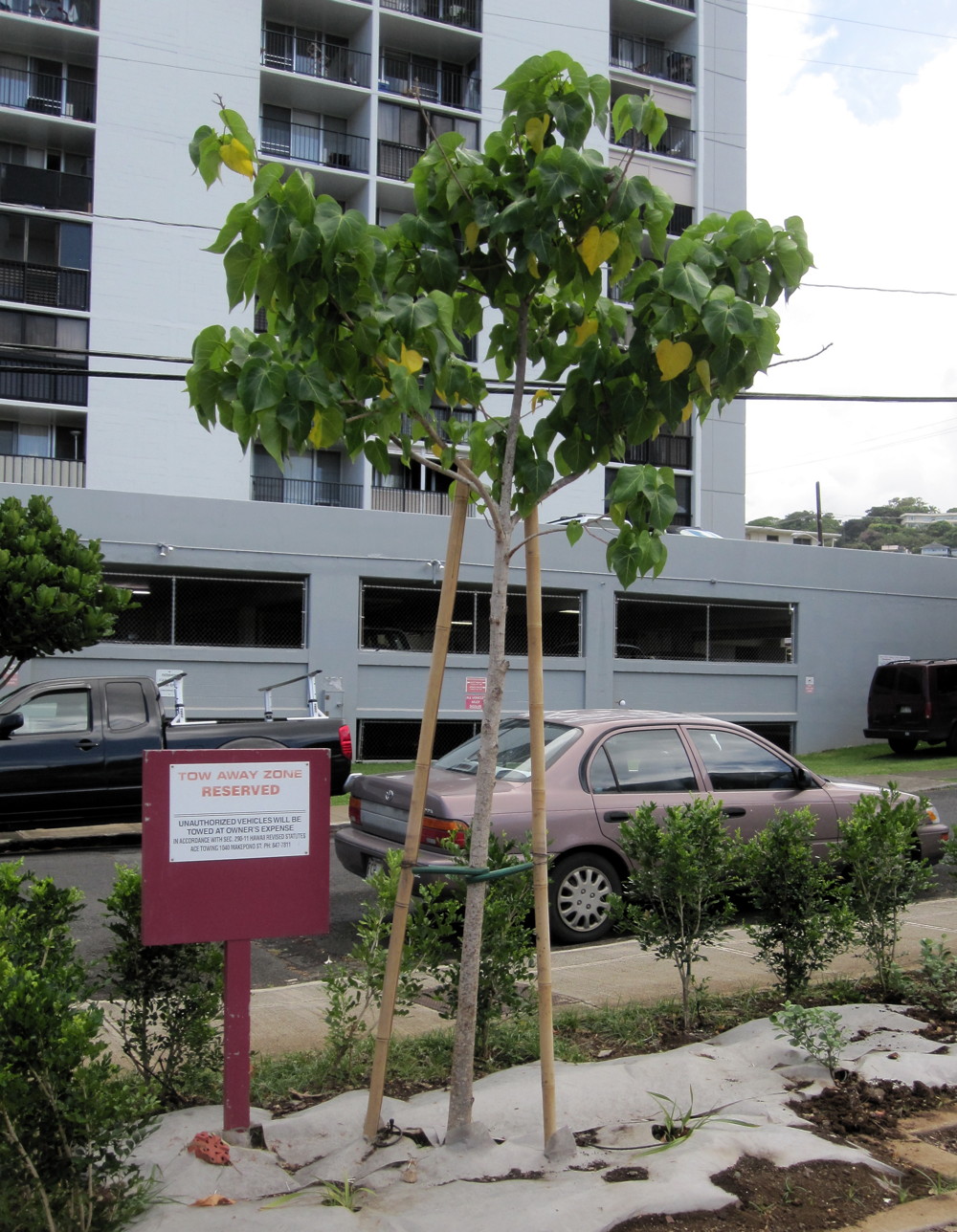 |
Milo Thespesia populnea
Milo is a small evergreen tree averaging 20–33 feet in height, with a short, often crooked stem and a broad, dense crown. It has glossy green, heart-shaped leaves and yellow hibiscus-type flowers. Milo was brought to Hawaii by the ancient Polynesians in their canoes.
The attractively grained wood takes a high polish and was used to make food bowls and plates because it would not flavor the food like some other types of wood. The bark was used for fiber to make cordage. The young leaves were eaten. The fruits were used to make a yellowish green dye.
The milo tree was given by Larry and Kiyoko Nitz in memory of Larry’s parents, Harvey F. and Bertha M. Nitz. |
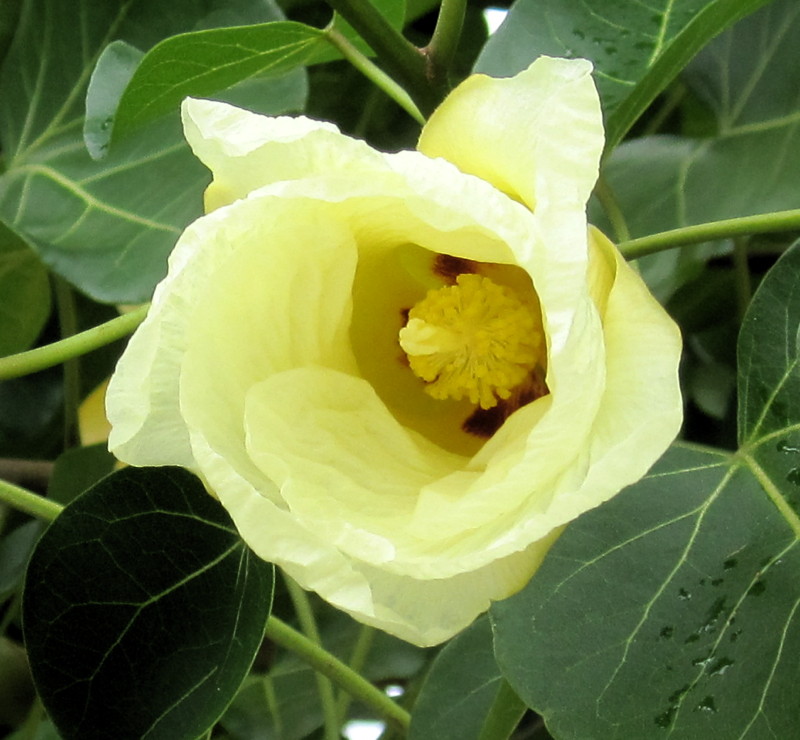 |
 |
Bauhinia / Hong Kong Orchid Tree Caesalpiniaceae Leguminosae
A species of flowering plant in the family Fabaceae, native to southeastern Asia. It is a small to medium-sized tree growing to 10–12 meters tall, deciduous in the dry season. This is a very popular ornamental tree in subtropical and tropical climates, grown for its scented flowers.
Acetone and methanol bark extracts of Bauhinia variegata has shown activity against some medically important bacterial strains. Kachnar is used to cure asthma and ulcers. The buds and roots are good for digestive problems.
The Hong Kong orchid tree was given by Jeff Lilley. |
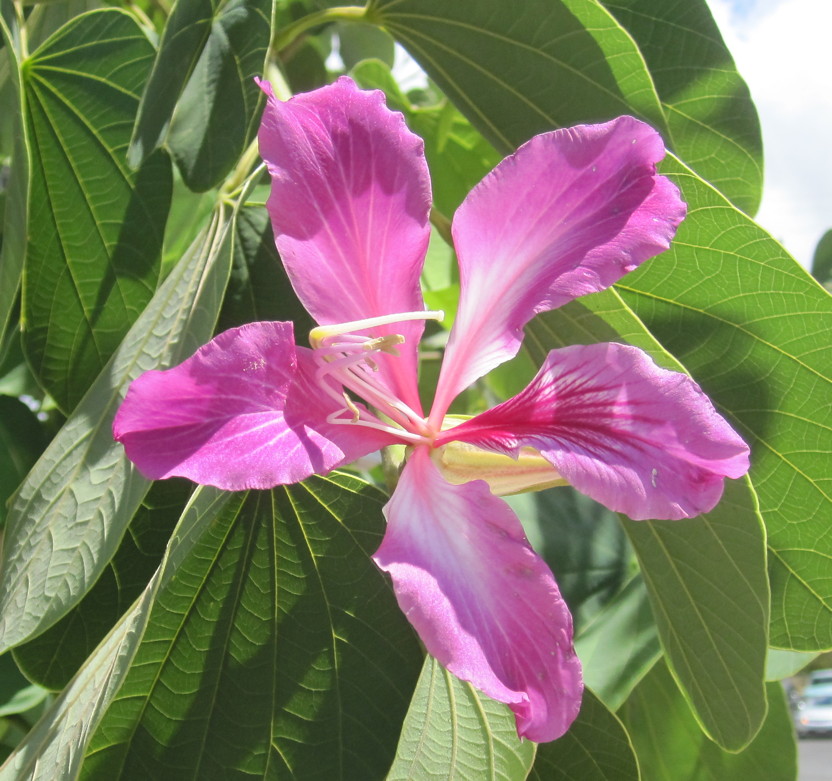 |
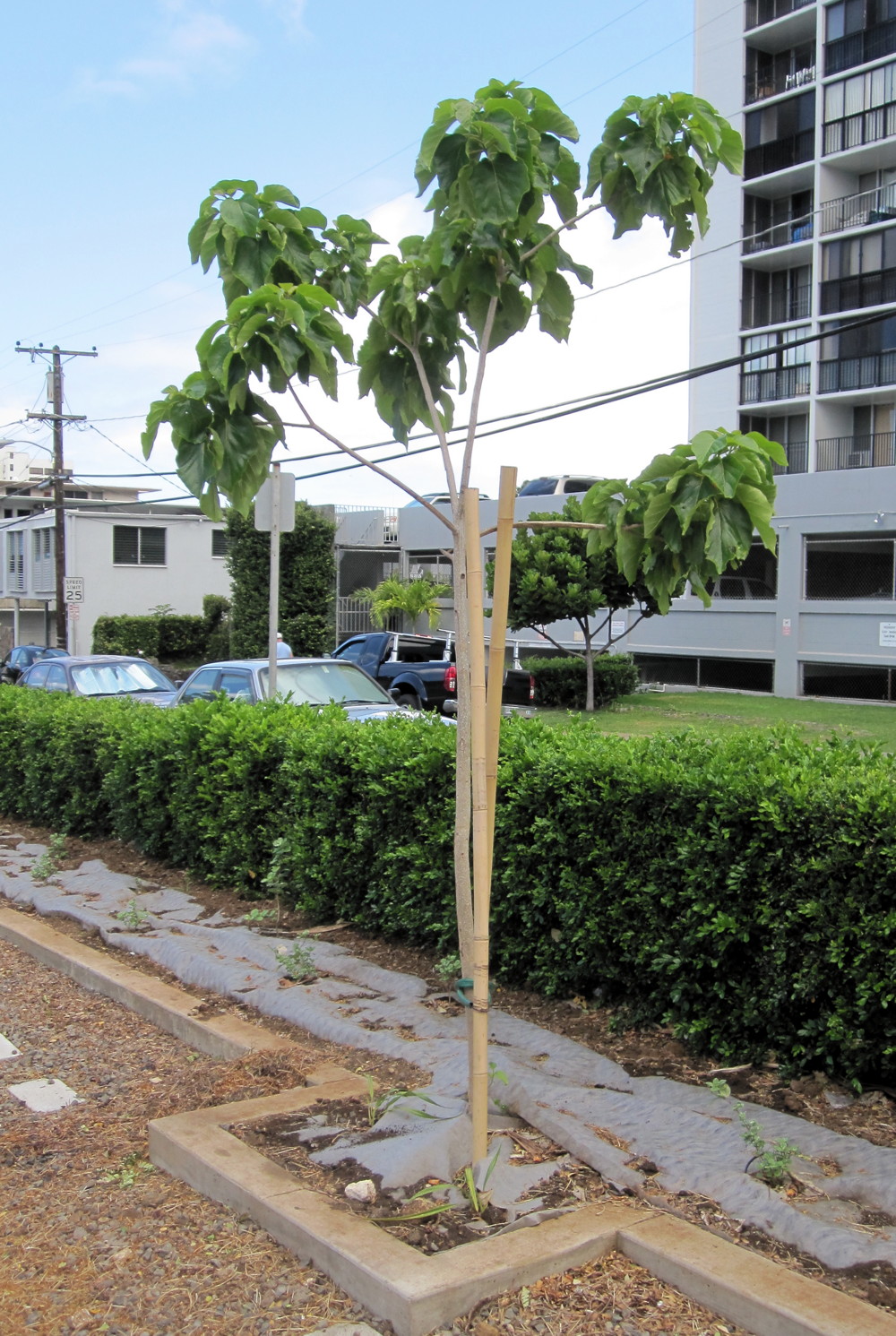 |
Kou / True Kou Cordia subcordat
Kou is a small evergreen tree with a broad, dense, wide crown that typically reaches 23–33 feet in height. The canopy may spread 25 feet across, often as wide as the tree is tall. The bark is pale gray and furrowed or flaky.
The rich brown wood is easily worked and was traditionally used for carving calabashes and other food vessels, kou wood does not impart a taste to food. Today kou wood is sought after by bowl turners and carvers. In areas where kou is abundant it makes excellent firewood. The bright orange, tubular flowers are strung into beautiful but short-lived leis.
The Kou tree was given by Bill Potter in memory of his aunt and uncle, Mary E. and Donald G. Cope. |
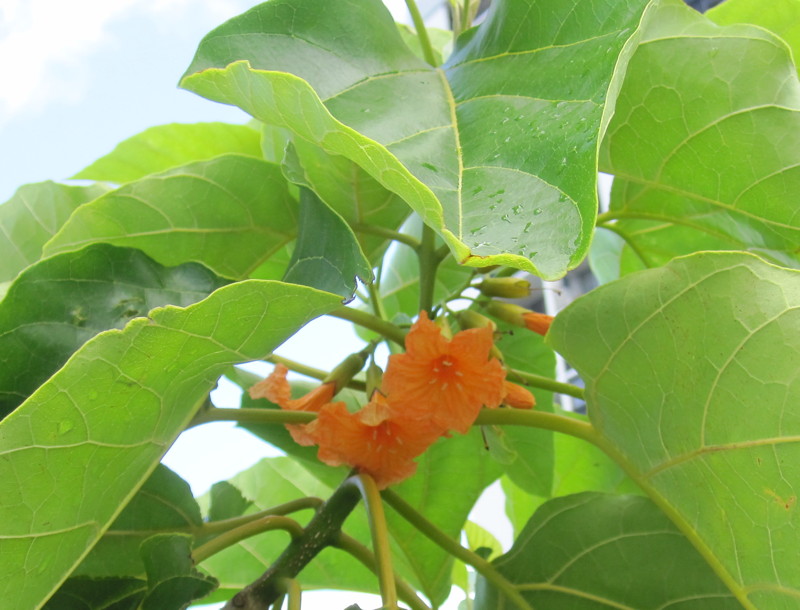 |
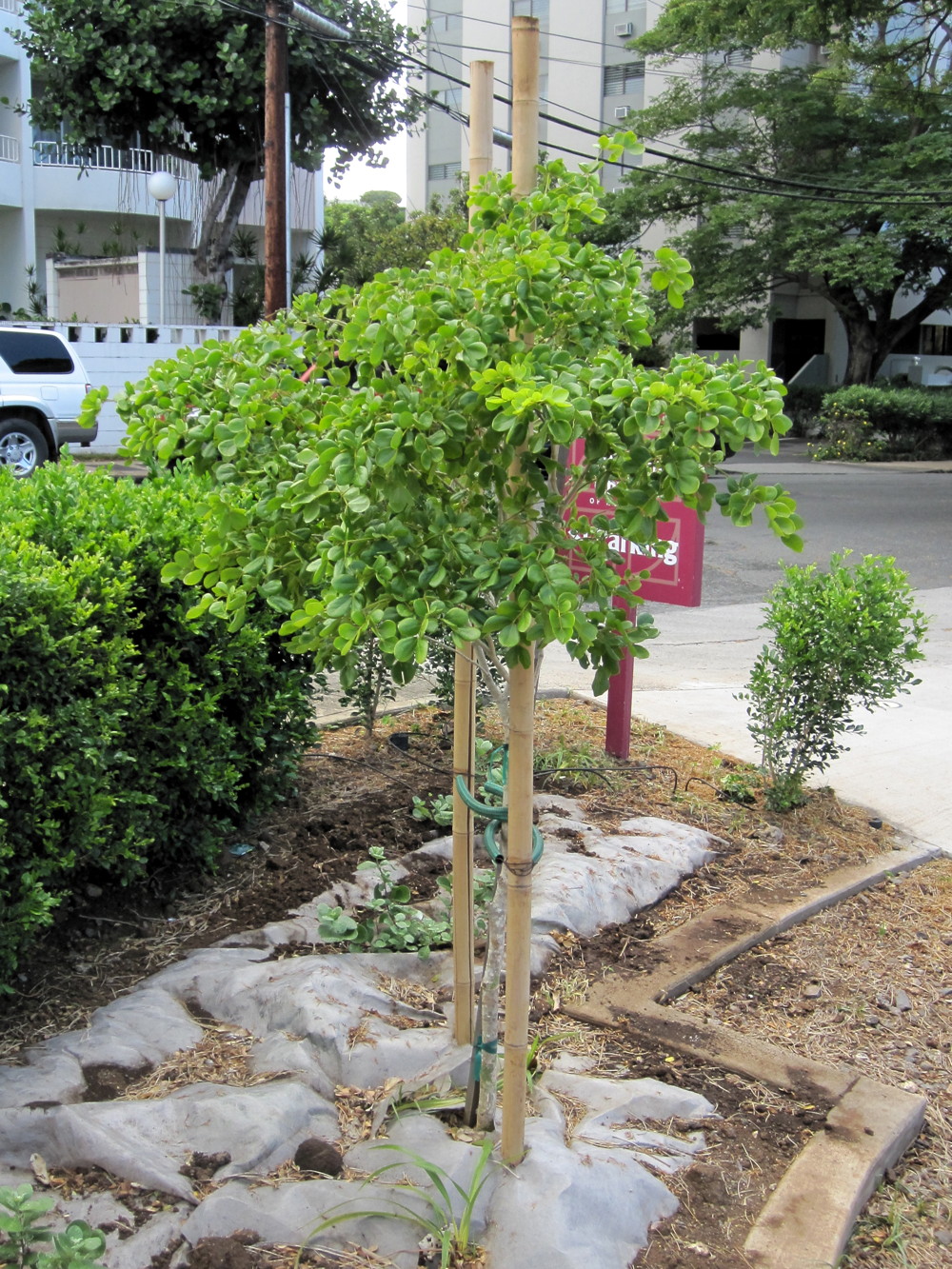 |
Lignum Vitae / Tree of Life Guaiacum officinale
“Lignum vitae” is Latin for “wood of life,” and derives its name from its medicinal uses. Lignum vitae is hard and durable, and is also the densest wood traded; it will easily sink in water.
Lignum vitae resin has been used to treat a variety of medical conditions from coughs to arthritis, and chips of the wood can also be used to brew a tea. Lignum Vitae has been used by the Navy and other military applications as Stern Tube and Jack Staff bearings in the stuffing box for destroyers, submarines, mine sweepers, polar class icebreakers and other large ships.
The Lignum Vitae tree was given by Peter and Jan Flachsbart. |
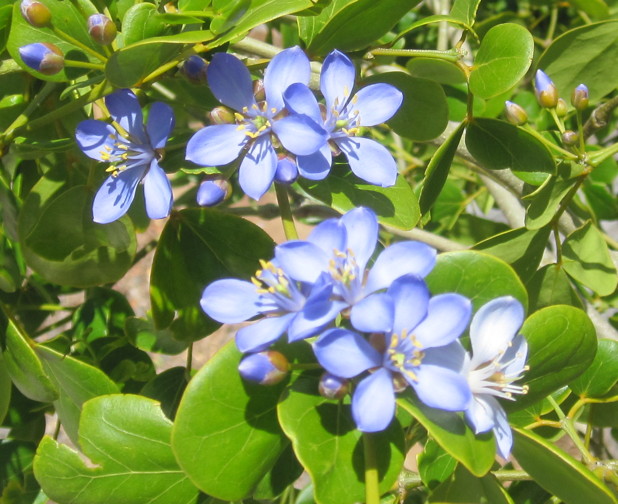 |
 |
Nā‘ū / Gardenia Gardenia brighamii
Gardenia brighamii is an endangered endemic species. It is a dry forest species that is thought to have once existed on all the main islands at elevations from 1100 to 1700 feet. Currently, only 15 to 19 individual plants are known to exist on Hawai‘i, Lana‘i, Maui, Moloka‘i, and O‘ahu. |
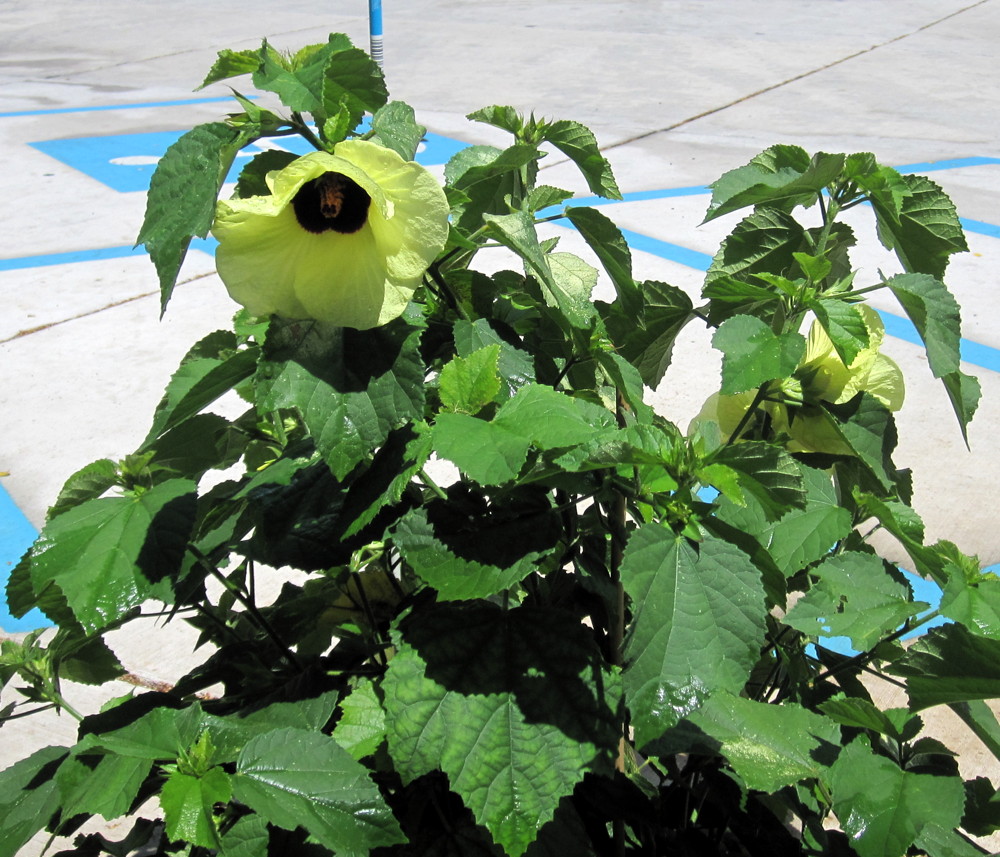 |
Hibiscus Varieties
Hawai‘i has seven beautiful native Hawaiian hibiscuses. And there are numerous closely related genera. Hawaiian hibiscus shrub grows to a height of 3 to 15 feet tall with a diameter of 8 to 15 feet. Shrubs bloom from spring through early summer with occasional flowers during the rest of the year.
Rock’s Kaua‘i Hibiscus / Ma‘o hau hele Hibiscus rockii (upper left)
White Hibiscus / Koki‘o ke‘o ke‘o Hibiscus arnottianus (lower left)
Red Hibiscus / Koki‘o ‘ula Hibiscus clayi (upper right) |
 |
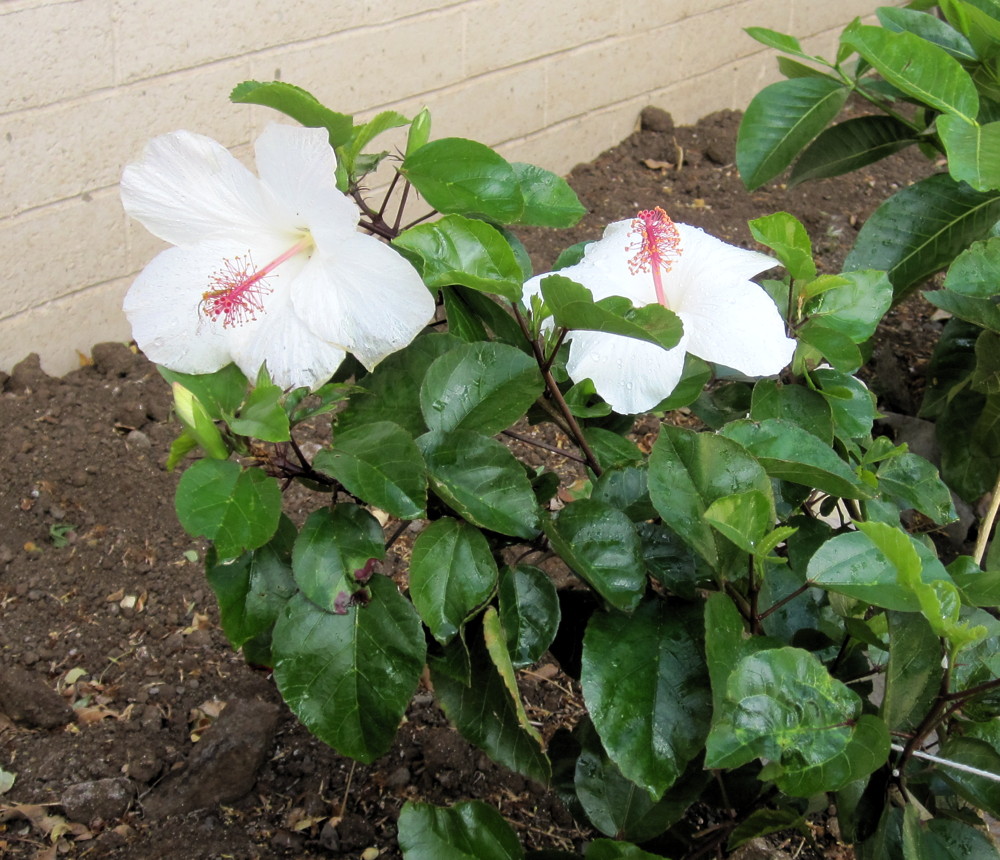 |
|
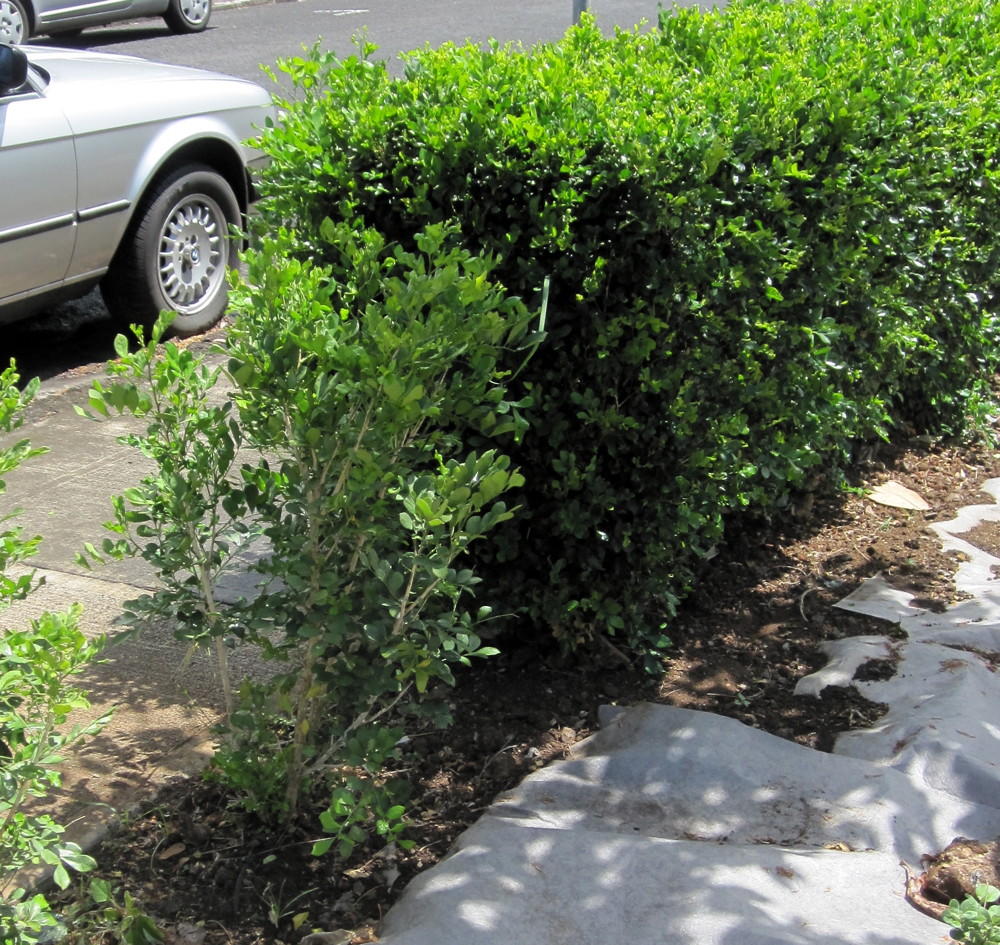 |
Mock Orange Murraya paniculata
Also known as Orange Jessamine, this tropical, evergreen plant with small, white, scented flowers is often grown as an ornamental hedge. It is closely related to citrus, and some varieties produce a small orange or red fruits similar to kumquats. |
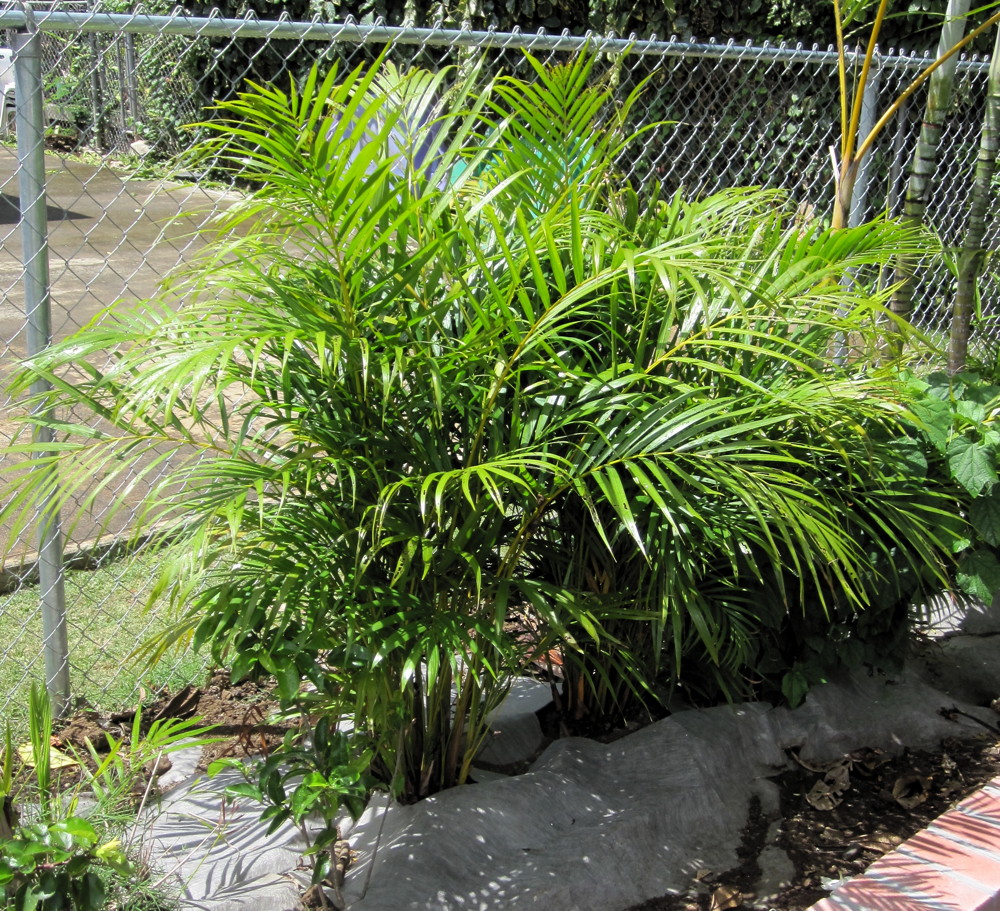 |
Palm Varieties
Areca Palm Chrysalidocarpus lutescens (left)
This common house plant is native to humid tropical forests from Malaysia to the Solomon islands. The plant produces clusters of stems with arching fronds.
|
 |
 |
Ti / Kī Cordyline fruticosa
Ti (Hawaiian Kī) is a plant common throughout Polynesia. Commonly used for food or medicine, thatch and clothing, it was particularly valued in ancient Hawai‘i for its spiritual power. The rhizomes were also fermented and distilled to make ‘ōkolehao. |
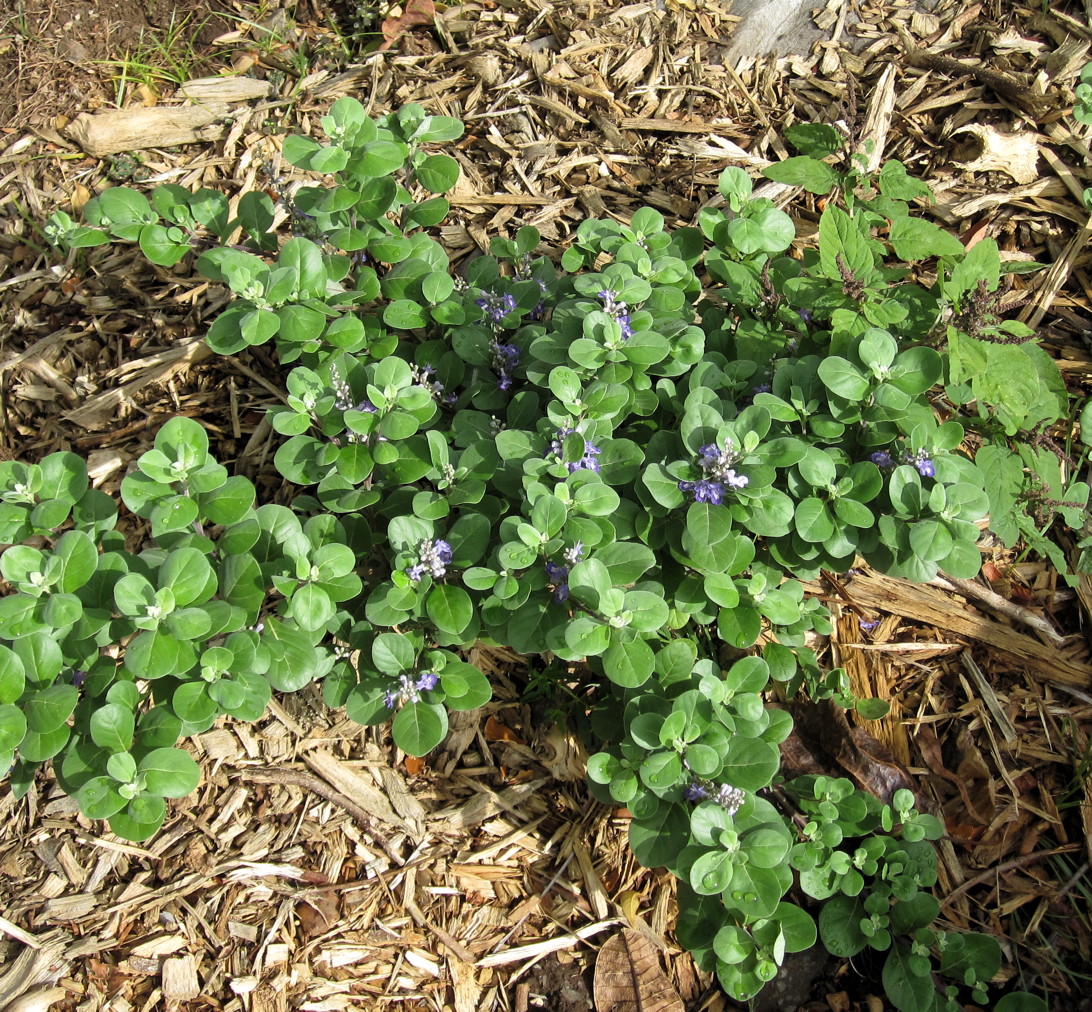 |
Pōhinahina Vitex rotundifolia
Native to seashores throughout the Pacific, this woody perennial plant typically grows to a height of approximately 1 meter. It has a sprawling growth habit and produces runners that root regularly at nodes. This rooting pattern allows the plant to spread rapidly. At maturity, it produces blue-purple flowers that are borne in clusters and ultimately yield small brown-black fruits. It has been used for medicinal purposes throughout its native range, but it was not considered medicinal in Hawai‘i. It was used in lei. |
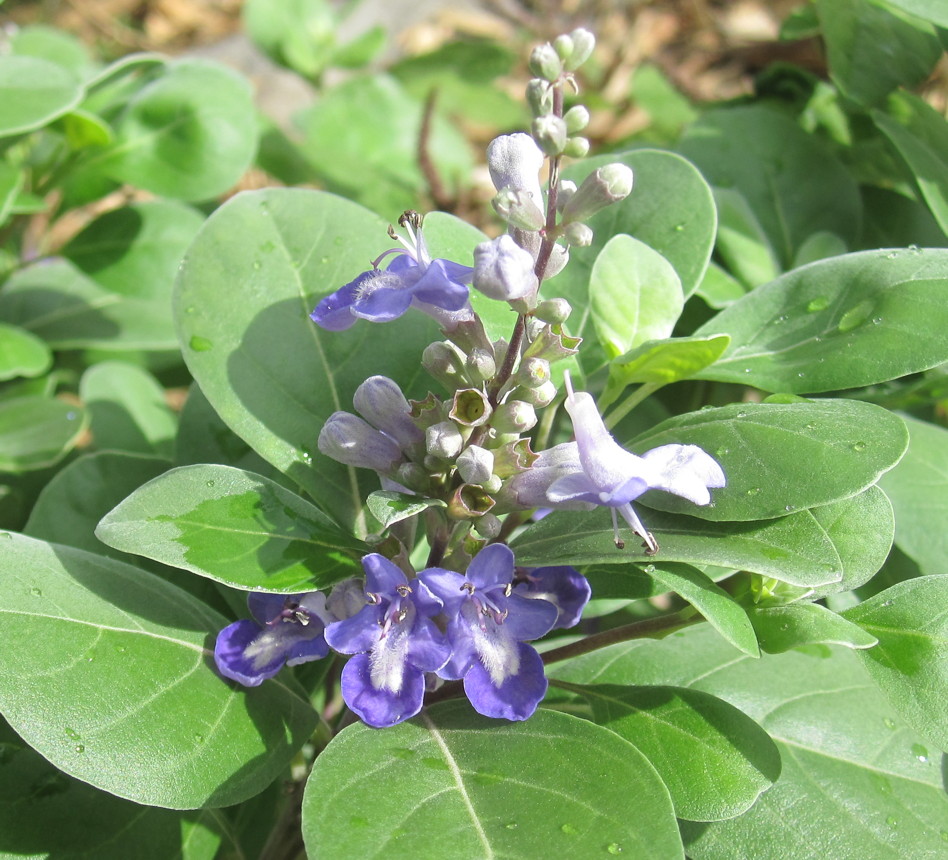 |
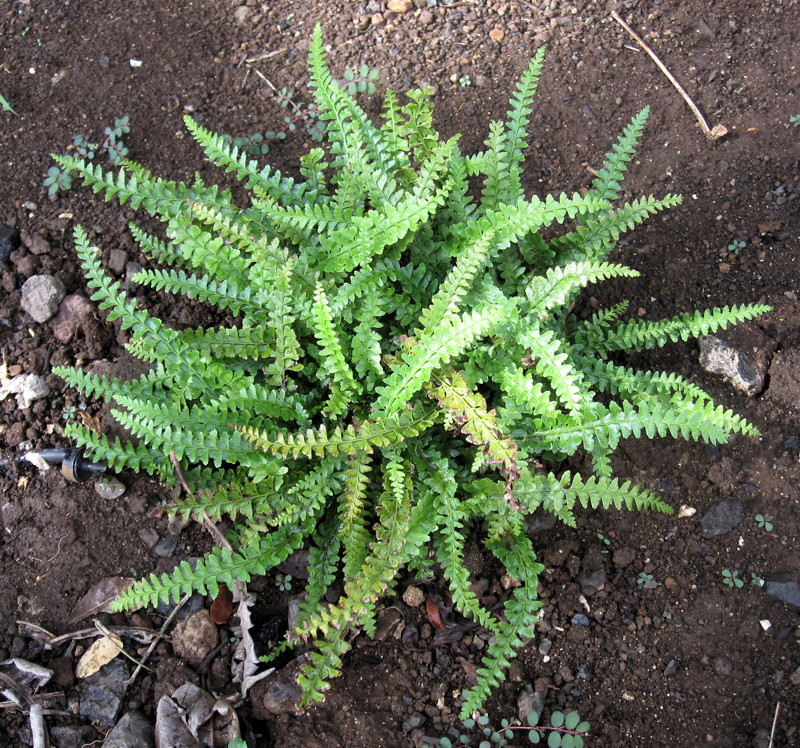 |
Palapalai Microlepia strigos
This terrestrial fern is native from North India to Japan and Polynesia. It can reach a height of 2–3 feet. The grows in clumps with delicate, arching, and lacy fronds. Despite its delicate appearance, the plant is tough and can survive a range of climates. In ancient Hawai‘i the ferns graced hula altars, and today they are often used in lei. |
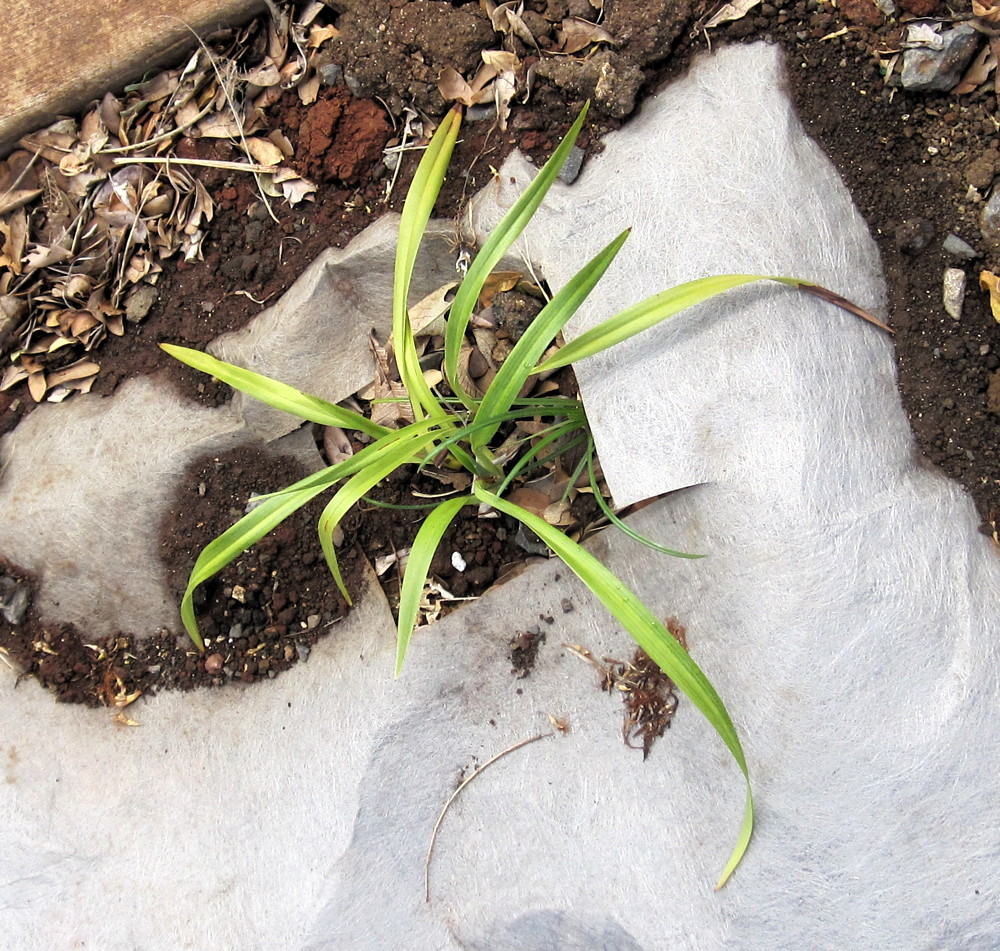 |
‘Uki‘uki Dianella sandwicensis
This indigenous plant is a perennial herb with blue berries. It grows in clumps with leaves up to 2 meters. In ancient Hawai‘i the leaves were braided for cordage and the berries used for dye. |
Top of Page
 Copyright © 2012 Lutheran Church of Honolulu Copyright © 2012 Lutheran Church of Honolulu
1730 Punahou Street, Honolulu, HI 96822 • 808-941-2566
Comments welcome at webmaster@lchwelcome.org |





















